#automation vs manual testing
Explore tagged Tumblr posts
Text
Automation Testing vs. Manual Testing: Which approach is best for your project? Discover the key differences, benefits, and scenarios where each shines. Learn how to leverage both to ensure top-notch software quality and performance. Dive into our latest blog to make an informed choice! 🚀 #AutomationTesting #ManualTesting #SoftwareQuality #TechInsights
0 notes
Text
#automation testing#manual vs automation#automation vs manual#manual testing#software testing services
2 notes
·
View notes
Text
Exploring the Types of Software Testing: Manual, Automation, Unit, Integration & More
Introduction
Software testing plays a vital role in delivering high-quality, reliable applications. With the rapid evolution of technology, understanding the different types of software testing has become essential for aspiring testers and IT professionals. Whether you're a fresher or switching careers into the tech domain, having in-depth knowledge of various testing methods can set you apart.

If you're currently exploring opportunities through Software Testing Training in Villivakkam, Trendnologies is your ideal partner. As a trusted training institute known for its real-time projects, expert-led sessions, and placement support, Trendnologies offers comprehensive training in all major testing types—from Manual to Automation, Unit to Integration, and beyond.
Let’s dive into the major types of software testing you’ll encounter in your journey.
1. Manual Testing
Manual testing is the most fundamental type of testing where testers execute test cases manually without using any automation tools.
Key Features:
Involves human observation to identify bugs.
Best suited for exploratory, usability, and ad-hoc testing.
No need for programming knowledge.
Manual testing is extensively taught in our Software Testing Training in Villivakkam, ensuring you master the core testing principles from the ground up.
2. Automation Testing
Automation testing involves the use of specialized tools to run test cases and compare actual outcomes with expected results automatically.
Key Features:
Faster execution of repetitive tasks.
Suitable for regression and performance testing.
Requires scripting knowledge (e.g., Selenium, QTP).
Trendnologies includes hands-on training in tools like Selenium to help learners automate real-world test scenarios.
3. Unit Testing
Unit testing checks individual components or modules of a program to ensure they work correctly in isolation.
Key Features:
Typically written and executed by developers.
Helps catch bugs early in the development lifecycle.
Tools used: JUnit, NUnit.
4. Integration Testing
Integration testing focuses on verifying the interaction between different modules or services in a system.
Key Features:
Ensures modules work together as intended.
Identifies issues in data flow and communication.
Techniques: Big Bang, Incremental (Top-Down & Bottom-Up).
5. System Testing
System testing validates the complete and integrated application to ensure it meets the required specifications.
Key Features:
Conducted in a production-like environment.
Covers functional and non-functional requirements.
6. Acceptance Testing
Acceptance testing is performed to determine whether the software meets business requirements and is ready for delivery.
Key Features:
Typically done by end users or clients.
Types include Alpha and Beta Testing.
7. Performance Testing
Performance testing checks how the system performs under various workloads.
Key Features:
Evaluates speed, responsiveness, and stability.
Includes Load, Stress, and Spike testing.
8. Regression Testing
Regression testing ensures that new changes haven’t affected the existing functionality of the software.
Key Features:
Frequently automated.
Essential after bug fixes or enhancements.
Why Learn All These at Trendnologies?
At Trendnologies, we don’t just teach testing theory—we prepare you for the industry. Our Software Testing Training in Villivakkam is designed to equip students with practical skills in all major testing types, using real-time projects, mock interviews, and placement-driven guidance.
FAQs
1. Do I need to learn both manual and automation testing?
Yes, having knowledge in both areas increases your versatility and job prospects.
2. Can a non-IT background student learn software testing?
Absolutely. Trendnologies provides beginner-friendly training, especially designed for career switchers and freshers.
3. Which testing type is in high demand?
Automation testing, especially using tools like Selenium and API testing, is currently in high demand across industries.
Call to Action
Ready to become a full-fledged software tester? Enroll in our Software Testing Training in Villivakkam and get industry-ready with real-world tools, hands-on projects, and expert mentorship at Trendnologies.
📞 Book your free demo today and take the first step toward a successful software testing career!
For more info: Website: www.trendnologies.com Email: [email protected] Contact us: +91 7871666962 Location: Chennai | Coimbatore | Bangalore
#Types of Software Testing#Manual vs Automation Testing#Unit Testing Tutorial#Integration Testing Explained#Best Software Testing Institute in Chennai
0 notes
Text
Rethinking Manual Testing: Exploring Real Value
A human thinking effort that is lost in mundane, repetitive work is basically marginal value, creating toxic cycles during your so called manual testing effort. The word “manual” in manual testing is misleading. Every testing effort needs a tool. Ex: To document your tests you need an Excel sheet or a tool like Jira. If I would use the word manual, I would mean thinking or I would just call it…
#automation testing vs manual testing#cognitive biases and heuristics#cognitive biases examples#cognitive biases in decision making#software test tools
0 notes
Text
Mastering AI-Based - Competitor Report & Ad Strategies

In the modern digital battlefield, brands are not just competing with direct rivals—they’re competing for attention, relevance, and customer loyalty in a crowded, fast-moving landscape. With the surge of marketing channels, evolving consumer behavior, and unpredictable algorithm shifts, understanding what your competitors are doing has become more important than ever. Enter the age of AI-powered intelligence, where marketers no longer need to rely on guesswork or outdated reports. Today, AI-Based - Competitor Report & Ad Strategies are transforming how businesses decode their competition and outsmart them with data-driven precision.
Why Does Competitor Intelligence Matter?
Before diving into how AI enhances competitor analysis, it’s essential to understand its value. Competitor intelligence helps businesses:
Identify market trends early
Spot gaps in their own strategy
Benchmark performance metrics
Discover winning ad creatives and formats
Refine pricing, messaging, and targeting
Without structured intelligence, you’re effectively navigating in the dark. But with the right tools, you can gain a panoramic view of your industry, fine-tune your marketing, and confidently invest in strategies with higher ROI.

Traditional Methods vs. AI-Powered Approaches
Traditional competitor research often involved manual tracking, surveys, reviewing public content, or using isolated data from SEO and social tools. While useful, these approaches are slow, limited, and reactive.
AI-powered competitor analysis, on the other hand, uses machine learning and automation to track thousands of data points across websites, ad copy, social platforms, and customer reviews—all in real time.
For example, instead of merely noting that a competitor is running ads on Facebook, AI tools can show you:
The ad creatives used
Duration and frequency of campaigns
Audience engagement metrics
Landing page performance
Budget estimates and targeting styles
Key Features Of AI-Driven Competitor Tools
Most advanced platforms offering AI-Based - Competitor Report & Ad Strategies come packed with features that go beyond basic comparisons. Some of the most valuable capabilities include:
Ad Creative Library
Access a visual archive of ad creatives your competitors are running across platforms like Facebook, Instagram, YouTube, and Google Display.
Targeting Insight
See which audience demographics, locations, and interests are being targeted, helping you refine your own segmentation strategy.
Engagement & Performance Metrics
Understand which ads are getting the most clicks, shares, and conversions—allowing you to model what works.
Trend Detection
Identify emerging trends in copywriting, visuals, formats, and placement.
Benchmarking
Compare your own performance against top competitors on metrics like click-through rate, CPC, and ad frequency.

Best Practices For Using AI-Based Insights
Having powerful data at your fingertips is just the beginning. AI at Work means mastering how to interpret competitor reports and translate insights into strategic, data-driven decisions:
Don’t Copy—Adapt: The goal isn’t to mimic your competitors but to understand what works and customize it for your unique brand voice and goals.
Focus on Patterns: One ad may go viral by chance, but consistent performance reveals reliable tactics. Look for patterns in creatives, timing, and audience response.
Combine with Internal Data: Match competitor insights with your own campaign data to refine A/B testing and predictive modeling.
Act Quickly: The value of real-time insights lies in speed. If you see a new offer or message gaining traction, test your own version immediately.
Use Multi-Platform Intelligence: Competitor behavior varies across platforms. Use tools that integrate data from multiple sources for a holistic strategy.
The Future Of Competitive Strategy Is AI-Powered
As markets grow more competitive and data becomes more abundant, businesses that don’t leverage AI will struggle to keep up. The ability to observe, learn, and act—powered by automation—is the new marketing edge.
Platforms offering AI-Based - Competitor Report & Ad Strategies are no longer optional; they are essential tools for staying ahead. Whether you're a startup aiming to disrupt your industry or an established brand defending your market share, AI can be your strategic partner in decoding what the competition is doing—and doing it better.

You can also watch: Globussoft: The Future of AI-Powered Business Starts Here!
youtube
Conclusion
Mastering competitive intelligence isn’t just about tracking your rivals—it’s about understanding the “why” behind their actions and using those insights to make smarter moves. Thanks to AI, this process is faster, more accurate, and more impactful than ever before.
FAQs
1. What is an AI-based competitor report?
It’s a report using AI to track competitors’ ads, strategies, and audience insights, helping you make smarter, data-driven marketing decisions.
2. How accurate are AI tools in tracking competitor ads?
AI tools offer real-time, reliable data by analyzing ad creatives, engagement, and targeting from multiple platforms for accurate competitor insights.
3. Can small businesses benefit from AI-Based - Competitor Report & Ad Strategies?
Yes, small businesses can use AI tools to gain insights, optimize marketing efforts, and compete effectively without needing a large advertising budget.
#marketingstrategies#competitoranalysisseo#competitoranalysistools#competitoranalysis#competitorresearch#Youtube
2 notes
·
View notes
Text
Traditional Vs Automated Direct Mail Services
Direct mail has long been a trusted marketing channel. In 2025, businesses face a choice between traditional direct mail services and automated solutions. Understanding the difference can drastically impact your campaign’s efficiency, ROI, and customer experience.

What Is Traditional Direct Mail?
Traditional direct mail involves manual processes such as:
Designing postcards or letters by hand or through desktop software
Printing at local shops or internal print facilities
Manually stuffing, stamping, and mailing
Tracking via physical receipts or third-party couriers
Pros:
Full control over the process
Hands-on personalization
Local vendor relationships
Cons:
Time-consuming
Prone to human error
Hard to scale
Costlier for small volumes
What Is Automated Direct Mail?
Automated direct mail refers to using software or APIs to trigger, personalize, print, and send mail pieces based on digital actions or CRM data.
Examples:
A new customer signs up, and a welcome postcard is triggered automatically
Abandoned cart triggers a mailed coupon
Real-time API sends birthday cards based on database date
Pros:
Scalable for millions of mailings
Real-time integration with CRMs and marketing platforms
Consistent branding and quality
Analytics and tracking included
Cons:
Higher setup cost initially
Requires data hygiene and tech alignment
Key Differences Between Traditional and Automated Direct Mail
FeatureTraditionalAutomatedSpeedSlow (days to weeks)Instant or scheduledScalabilityLimitedHighly scalablePersonalizationManualDynamic via variable dataTrackingManual or nonexistentDigital trackingIntegrationNoneAPI and CRM support
When Should You Choose Traditional?
For small, one-time mailings
When personal touch matters (e.g., handwritten letters)
In areas with no access to digital tools
When to Use Automated Direct Mail?
For ongoing marketing campaigns
When speed, consistency, and tracking are priorities
For eCommerce, SaaS, healthcare, insurance, and real estate
Use Case Comparisons
Traditional Use Case: Local Real Estate Agent
Manually prints and mails just listed postcards to a zip code every month.
Automated Use Case: National Insurance Company
Triggers annual policy renewal letters for 500,000+ customers via API.
Benefits of Automation in 2025
Real-Time Triggers from websites, CRMs, or payment systems
Enhanced Reporting for ROI measurement
Reduced Costs with bulk printing partnerships
Faster Delivery using localized printing partners globally
Eco-Friendly Workflows (less waste, digital proofing)
How to Switch from Traditional to Automated Direct Mail
Audit your current workflow
Choose a provider with API integration (e.g., PostGrid, Lob, Inkit)
Migrate your address data and test campaigns
Train your team and build trigger-based workflows
Conclusion: Choosing the Right Direct Mail Method
Ultimately, the right choice depends on your goals. While traditional direct mail has its place, automated direct mail offers speed, flexibility, and scale. For modern businesses aiming for growth and efficiency, automation is the clear winner.
SEO Keywords: traditional vs automated direct mail, automated mailing services, direct mail automation, API for direct mail, manual vs automated marketing.
youtube
SITES WE SUPPORT
Healthcare Mailing API – Wix
2 notes
·
View notes
Text
Automated Testing vs. Manual Testing: Which One is Right for Your Project?
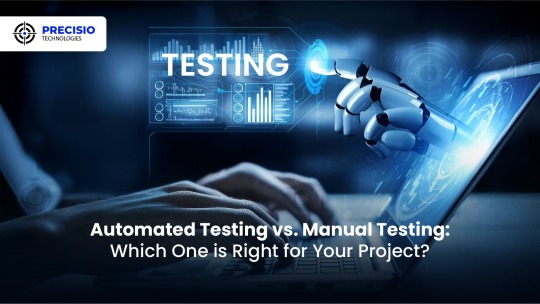
Achieving high-quality, reliable software stands as a fundamental requirement in software development. Successful testing functions as an essential tool to discover faults and build performance capabilities that create better user experience outcomes. Two main testing methods dominate the field: automated testing and manual testing. The process of quality software assurance uses different testing approaches that demonstrate their own advantages as well as weaknesses according to specific project requirements and scenarios. We will explore the specifics to determine which testing process works best for your system development efforts.
1. What Is Manual Testing?

Manual testing involves a human tester manually executing test cases without using automation tools. Key Characteristics:
The methodology focuses its efforts on user interface together with usability and experience testing.
Human-centered applications where selection requires discretion include ad hoc testing and enumerative testing as well as examinations that need human evaluation.
Human performers are required during this approach; thus, it demands substantial time.
2. What Is Automated Testing?
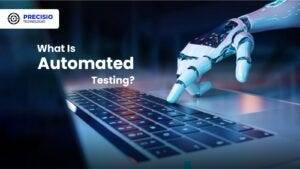
Software performing automated testing executes test cases through workflows and helpers. Key Characteristics:
Efficient for repetitive and regression testing.
Users must spend money on tools along with developing custom scripts for testing.
Reduces human error.
3. Advantages of Manual Testing

Human Intuition: Software testing professionals can detect kernels through their human cognitive ability that automated tools cannot match. The observation and evaluation of visual elements runs more efficiently through human operatives instead of advanced tools.
Flexibility: This method suits exploratory testing specifically because there are no pre-determined scripts available.
Low Initial Investment: Running this approach does not need tool purchases or applications to develop automation frameworks.
Adaptable for UI/UX Testing: Running this approach does not need tool purchases or applications to develop automation frameworks.
4. Advantages of Automated Testing
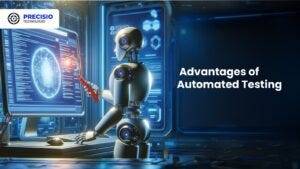
Speed: Executes repetitive tests much faster than humans.
Scalability: The system proves most effective for extensive projects that need constant system updates.
Accuracy: When performing recurring actions, automated systems minimize the chances of human mistakes.
Cost-Efficient in the Long Run: Once established and implemented, the system demands costly investments but ensures continuous development expenses decrease over time.
Better for CI/CD Pipelines: Such testing technology connects various development pipelines that support agile and DevOps methodologies.
5. Disadvantages of Manual Testing

Time-Consuming: The manual performance of repeated tests leads to delayed completion of projects.
Error-Prone: Large applications contain tiny bugs that human testers commonly fail to detect.
Not Ideal for Scalability: The process of increasing manual testing needs additional testers to avoid cost escalations.
6. Disadvantages of Automated Testing
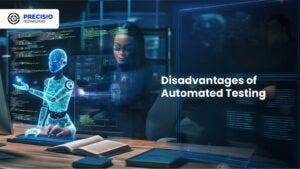
Initial Costs: Organizations must provide high financial resources to procure testing tools together with developing programming constructs.
Limited to Pre-Defined Scenarios: These testing approaches work poorly for handling exploratory or ad hoc testing.
Requires Maintenance: Test scripts need frequent updates when application changes occur.
Not Suitable for UI/UX Testing: Struggles with subjective user experience evaluations.
7. When to Use Manual Testing
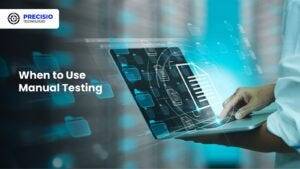
Small Projects: The testing method proves beneficial at a low cost for small applications and provides quick assessments.
Exploratory Testing: Testing this approach benefits projects whose scripts have not been defined yet or need evaluation for newly added features.
Visual and Usability Testing: Performing assessments on interface components together with design features.
8. When to Use Automated Testing
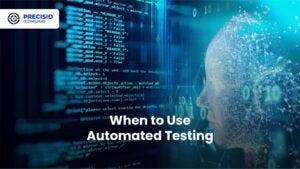
Large Projects: Handles scalability for projects with frequent updates.
Regression Testing: Program testing becomes more efficient through automation since automated assessments perform multiple tests following each update process.
Performance Testing: The system performs efficient capabilities to conduct load testing and stress testing.
Continuous Development Environments: Agile progression and DevOps implementations need automation as a core requirement.
READ MORE- https://www.precisio.tech/automated-testing-vs-manual-testing-which-one-is-right-for-your-project/
2 notes
·
View notes
Text
Sectional Doors: A Smart, Secure Solution for Commercial and Industrial Properties

Sectional overhead doors are a go-to solution for modern commercial facilities—and for good reason. Designed for durability, insulation, and ease of use, sectional doors offer the strength and flexibility businesses need to secure their operations and keep workflows running smoothly.
At UK Doors & Shutters, we supply, install, service, and repair sectional doors for clients across logistics, retail, and industrial sectors. Whether you’re managing a distribution hub, a warehouse, or a high-traffic retail unit, sectional doors can be tailored to your specific operational needs.
What Are Sectional Doors and Why Are They Ideal for Commercial Use?
Sectional doors are made of horizontal panels that slide upward and rest flat along the ceiling when opened. This design makes them space-efficient and easy to automate, which is crucial in busy work environments.
Key Benefits:
Excellent insulation for temperature-sensitive operations
Space-saving operation, ideal for tight or high-traffic areas
High security, with reinforced panels and locking systems
Quiet, smooth performance with low maintenance needs
Customisable options to match usage, frequency, and access control
These doors are built for high-performance environments and are tested to endure the demanding conditions of commercial and industrial use.
Sectional Door Solutions for Logistics, Retail & Industrial Facilities
Each industry has unique requirements, and sectional doors can be adapted to meet them.
Logistics & Warehousing: Insulated doors help regulate temperatures while fast operation keeps goods moving efficiently through loading bays.
Retail Units: Clean, professional aesthetics paired with security make sectional doors ideal for delivery access or concealed rear entries.
Industrial Sites: Heavy-duty doors withstand high use, impact, and environmental stress in factories, plants, and storage yards.
Choosing the Right Sectional Door for Your Warehouse or Loading Bay
Selecting the right sectional door depends on your building layout, operating environment, and security needs.
Consider:
Manual or motorised operation
Insulated vs. non-insulated panels
Frequency of use
Size of the opening
Environmental exposure (wind, dust, moisture)
Our team at UK Doors & Shutters offers on-site surveys to help determine the best fit for your site—ensuring long-term performance and cost efficiency.
Common Sectional Door Problems
Even the best sectional doors can face issues over time. Here are some typical problems we’re called out to fix:
Broken or worn torsion springs
Damaged panels or hinges
Misaligned tracks
Motor or remote failures
Doors stuck open or jammed shut
These issues can compromise both safety and productivity—especially in time-sensitive operations.
What’s Included in a Professional Sectional Door Service Visit?
Preventative maintenance is key to avoiding downtime and costly emergency repairs. A professional service visit from UK Doors & Shutters includes:
Full inspection of door panels, hinges, and tracks
Motor, control unit, and safety sensor checks
Spring and cable tension adjustments
Lubrication of all moving parts
Detailed report with service recommendations
Routine servicing not only extends the life of your door but ensures safety compliance and smoother operation.
Emergency Sectional Door Repairs: Fast Response for Your Business
When your door breaks down, it can halt operations or leave your site unsecured. That’s why we offer 24/7 emergency repair services across the North West. Our technicians respond quickly to diagnose the issue, secure the area, and carry out immediate repairs or temporary fixes—minimising disruption to your business.
Why Choose UK Doors & Shutters?
With over 20 years of experience, we’re a trusted provider of sectional door services for commercial and industrial clients. Here’s why businesses choose us:
Rapid response times and emergency cover
Certified, experienced engineers
Customised door systems for every industry
Transparent pricing and reliable service
Coverage across Bolton, Bradford, Blackpool, Leeds, Liverpool, and Manchester
Book Your Installation, Repair, or Maintenance Today
Protect your business and keep operations running smoothly with professional sectional door services from UK Doors & Shutters.
Call us at 01204 918991 Visit your local branch in Bolton, Bradford, Blackpool, Leeds, Liverpool, or Manchester Book online anytime at: https://www.ukdoorsandshutters.com/repairs-24-7
Secure. Efficient. Professional. Trust UK Doors & Shutters for reliable sectional door solutions that deliver.
#UK Doors & Shutters#Roller Shutter Repairs#Roller Shutter Installation#Roller Shutter Maintenance#Roller Shutters Warrington#Roller Shutter Installation Warrington#Roller Shutter Servicing#Annual Roller Shutter Servicing#Roller Shutter Services Southport#Roller Shutter Repairs Southport#Garage Door Installation Northwest#Garage Doors Northwest#Insulated Garage Door#Security Grilles#Roller Shutter Repairs Altrincham#Shutter Installers Altrincham#Roller Shutter Repairs Liverpool & Merseyside#Shopfront Repairs Liverpool & Merseyside#Roller Shutter Repairs York#Roller Shutter Installers York#Roller Shutters Manchester#Roller Shutter Repairs Manchester#Roller Shutter Preston#Roller Shutter Repairs Preston#Aluminium Shutters UK#Aluminium Roller ShutterInstallations#Roller Shutter Repairs Oldham#Roller Shutter Installation Wiga#Roller Shutter Repairs Wiga#Roller Shutter Repairs Bradford & West Yorkshire
1 note
·
View note
Text
Full Stack Testing vs. Full Stack Development: What’s the Difference?

In today’s fast-evolving tech world, buzzwords like Full Stack Development and Full Stack Testing have gained immense popularity. Both roles are vital in the software lifecycle, but they serve very different purposes. Whether you’re a beginner exploring your career options or a professional looking to expand your skills, understanding the differences between Full Stack Testing and Full Stack Development is crucial. Let’s dive into what makes these two roles unique!
What Is Full Stack Development?
Full Stack Development refers to the ability to build an entire software application – from the user interface to the backend logic – using a wide range of tools and technologies. A Full Stack Developer is proficient in both front-end (user-facing) and back-end (server-side) development.
Key Responsibilities of a Full Stack Developer:
Front-End Development: Building the user interface using tools like HTML, CSS, JavaScript, React, or Angular.
Back-End Development: Creating server-side logic using languages like Node.js, Python, Java, or PHP.
Database Management: Handling databases such as MySQL, MongoDB, or PostgreSQL.
API Integration: Connecting applications through RESTful or GraphQL APIs.
Version Control: Using tools like Git for collaborative development.
Skills Required for Full Stack Development:
Proficiency in programming languages (JavaScript, Python, Java, etc.)
Knowledge of web frameworks (React, Django, etc.)
Experience with databases and cloud platforms
Understanding of DevOps tools
In short, a Full Stack Developer handles everything from designing the UI to writing server-side code, ensuring the software runs smoothly.
What Is Full Stack Testing?
Full Stack Testing is all about ensuring quality at every stage of the software development lifecycle. A Full Stack Tester is responsible for testing applications across multiple layers – from front-end UI testing to back-end database validation – ensuring a seamless user experience. They blend manual and automation testing skills to detect issues early and prevent software failures.
Key Responsibilities of a Full Stack Tester:
UI Testing: Ensuring the application looks and behaves correctly on the front end.
API Testing: Validating data flow and communication between services.
Database Testing: Verifying data integrity and backend operations.
Performance Testing: Ensuring the application performs well under load using tools like JMeter.
Automation Testing: Automating repetitive tests with tools like Selenium or Cypress.
Security Testing: Identifying vulnerabilities to prevent cyber-attacks.
Skills Required for Full Stack Testing:
Knowledge of testing tools like Selenium, Postman, JMeter, or TOSCA
Proficiency in both manual and automation testing
Understanding of test frameworks like TestNG or Cucumber
Familiarity with Agile and DevOps practices
Basic knowledge of programming for writing test scripts
A Full Stack Tester plays a critical role in identifying bugs early in the development process and ensuring the software functions flawlessly.
Which Career Path Should You Choose?
The choice between Full Stack Development and Full Stack Testing depends on your interests and strengths:
Choose Full Stack Development if you love coding, creating interfaces, and building software solutions from scratch. This role is ideal for those who enjoy developing creative products and working with both front-end and back-end technologies.
Choose Full Stack Testing if you have a keen eye for detail and enjoy problem-solving by finding bugs and ensuring software quality. If you love automation, performance testing, and working with multiple testing tools, Full Stack Testing is the right path.
Why Both Roles Are Essential :
Both Full Stack Developers and Full Stack Testers are integral to software development. While developers focus on creating functional features, testers ensure that everything runs smoothly and meets user expectations. In an Agile or DevOps environment, these roles often overlap, with testers and developers working closely to deliver high-quality software in shorter cycles.
Final Thoughts :
Whether you opt for Full Stack Testing or Full Stack Development, both fields offer exciting opportunities with tremendous growth potential. With software becoming increasingly complex, the demand for skilled developers and testers is higher than ever.
At TestoMeter Pvt. Ltd., we provide comprehensive training in both Full Stack Development and Full Stack Testing to help you build a future-proof career. Whether you want to build software or ensure its quality, we’ve got the perfect course for you.
Ready to take the next step? Explore our Full Stack courses today and start your journey toward a successful IT career!
This blog not only provides a crisp comparison but also encourages potential students to explore both career paths with TestoMeter.
For more Details :
Interested in kick-starting your Software Developer/Software Tester career? Contact us today or Visit our website for course details, success stories, and more!
🌐visit - https://www.testometer.co.in/
2 notes
·
View notes
Text
Which is better full stack development or testing?

Full Stack Development vs Software Testing: Which Career Path is Right for You?
In today’s rapidly evolving IT industry, choosing the right career path can be challenging. Two popular options are Full Stack Development and Software Testing. Both of these fields offer unique opportunities and cater to different skill sets, making it essential to assess which one aligns better with your interests, goals, and long-term career aspirations.
At FirstBit Solutions, we take pride in offering a premium quality of teaching, with expert-led courses designed to provide real-world skills. Our goal is to help you know, no matter which path you choose. Whether you’re interested in development or testing, our 100% unlimited placement call guarantee ensures ample job opportunities. In this answer, we’ll explore both career paths to help you make an informed decision.
Understanding Full Stack Development
What is Full Stack Development?
Full Stack Development involves working on both the front-end (client-side) and back-end (server-side) of web applications. Full stack developers handle everything from designing the user interface (UI) to managing databases and server logic. They are versatile professionals who can oversee a project from start to finish.
Key Skills Required for Full Stack Development
To become a full stack developer, you need a diverse set of skills, including:
Front-End Technologies: HTML, CSS, and JavaScript are the fundamental building blocks of web development. Additionally, proficiency in front-end frameworks like React, Angular, or Vue.js is crucial for creating dynamic and responsive web interfaces.
Back-End Technologies: Understanding back-end programming languages like Node.js, Python, Ruby, Java, or PHP is essential for server-side development. Additionally, knowledge of frameworks like Express.js, Django, or Spring can help streamline development processes.
Databases: Full stack developers must know how to work with both SQL (e.g., MySQL, PostgreSQL) and NoSQL (e.g., MongoDB) databases.
Version Control and Collaboration: Proficiency in tools like Git, GitHub, and agile methodologies is important for working in a collaborative environment.
Job Opportunities in Full Stack Development
Full stack developers are in high demand due to their versatility. Companies often prefer professionals who can handle both front-end and back-end tasks, making them valuable assets in any development team. Full stack developers can work in:
Web Development
Mobile App Development
Enterprise Solutions
Startup Ecosystems
The flexibility to work on multiple layers of development opens doors to various career opportunities. Moreover, the continuous rise of startups and digital transformation initiatives has further fueled the demand for full stack developers.
Benefits of Choosing Full Stack Development
High Demand: The need for full stack developers is constantly increasing across industries, making it a lucrative career choice.
Versatility: You can switch between front-end and back-end tasks, giving you a holistic understanding of how applications work.
Creativity: If you enjoy creating visually appealing interfaces while also solving complex back-end problems, full stack development allows you to engage both creative and logical thinking.
Salary: Full stack developers typically enjoy competitive salaries due to their wide skill set and ability to handle various tasks.
Understanding Software Testing
What is Software Testing?
Software Testing is the process of evaluating and verifying that a software product or application is free of defects, meets specified requirements, and functions as expected. Testers ensure the quality and reliability of software by conducting both manual and automated tests.
Key Skills Required for Software Testing
To succeed in software testing, you need to develop the following skills:
Manual Testing: Knowledge of testing techniques, understanding different testing types (unit, integration, system, UAT, etc.), and the ability to write test cases are fundamental for manual testing.
Automated Testing: Proficiency in tools like Selenium, JUnit, TestNG, or Cucumber is essential for automating repetitive test scenarios and improving efficiency.
Attention to Detail: Testers must have a keen eye for identifying potential issues, bugs, and vulnerabilities in software systems.
Scripting Knowledge: Basic programming skills in languages like Java, Python, or JavaScript are necessary to write and maintain test scripts for automated testing.
Job Opportunities in Software Testing
As the demand for high-quality software increases, so does the need for skilled software testers. Companies are investing heavily in testing to ensure that their products perform optimally in the competitive market. Software testers can work in:
Manual Testing
Automated Testing
Quality Assurance (QA) Engineering
Test Automation Development
With the rise of Agile and DevOps methodologies, the role of testers has become even more critical. Continuous integration and continuous delivery (CI/CD) pipelines rely on automated testing to deliver reliable software faster.
Benefits of Choosing Software Testing
Job Security: With software quality being paramount, skilled testers are in high demand, and the need for testing professionals will only continue to grow.
Quality Assurance: If you have a knack for perfection and enjoy ensuring that software works flawlessly, testing could be a satisfying career.
Automated Testing Growth: The shift toward automation opens up new opportunities for testers to specialize in test automation tools and frameworks, which are essential for faster releases.
Flexibility: Testing provides opportunities to work across different domains and industries, as almost every software product requires thorough testing.
Full Stack Development vs Software Testing: A Comparative Analysis
Let’s break down the major factors that could influence your decision:
Factors
Full Stack Development
Software Testing
Skills
Proficiency in front-end and back-end technologies, databases
Manual and automated testing, attention to detail, scripting
Creativity
High – involves creating and designing both UI and logic
Moderate – focuses on improving software through testing and validation
Job Roles
Web Developer, Full Stack Engineer, Mobile App Developer
QA Engineer, Test Automation Engineer, Software Tester
Career Growth
Opportunities to transition into senior roles like CTO or Solution Architect
Growth towards roles in automation and quality management
Salary
Competitive with wide-ranging opportunities
Competitive, with automation testers in higher demand
Demand
High demand due to increasing digitalization and web-based applications
Consistently high, especially in Agile/DevOps environments
Learning Curve
Steep – requires mastering multiple languages and technologies
Moderate – requires a focus on testing tools, techniques, and automation
Why Choose FirstBit Solutions for Full Stack Development or Software Testing?
At FirstBit Solutions, we provide comprehensive training in both full stack development and software testing. Our experienced faculty ensures that you gain hands-on experience and practical knowledge in the field of your choice. Our 100% unlimited placement call guarantee ensures that you have ample opportunities to land your dream job, no matter which course you pursue. Here’s why FirstBit is your ideal training partner:
Expert Trainers: Learn from industry veterans with years of experience in development and testing.
Real-World Projects: Work on real-world projects that simulate industry scenarios, providing you with the practical experience needed to excel.
Job Assistance: Our robust placement support ensures you have access to job openings with top companies.
Flexible Learning: Choose from online and offline batch options to fit your schedule.
Conclusion: Which Career Path is Right for You?
Ultimately, the choice between full stack development and software testing comes down to your personal interests, skills, and career aspirations. If you’re someone who enjoys building applications from the ground up, full stack development might be the perfect fit for you. On the other hand, if you take satisfaction in ensuring that software is of the highest quality, software testing could be your calling.
At FirstBit Solutions, we provide top-notch training in both fields, allowing you to pursue your passion and build a successful career in the IT industry. With our industry-aligned curriculum, expert guidance, and 100% placement call guarantee, your future is in good hands.
So, what are you waiting for? Choose the course that excites you and start your journey toward a rewarding career today!
#education#programming#tech#technology#training#python#full stack developer#software testing#itservices#java#.net#.net developers#datascience
2 notes
·
View notes
Video
youtube
Kanban, Waterfall, and DevOps are three different approaches to project management and software development. Here's an overview of each concept: 1. Kanban: Definition: Kanban is a visual management method for software development and knowledge work. It originated from manufacturing processes in Toyota and has been adapted for use in software development to improve efficiency and flow.
Key Concepts: Visualization: Work items are represented on a visual board, usually with columns such as "To Do," "In Progress," and "Done."
Work in Progress (WIP) Limits: Limits are set on the number of items allowed in each column to optimize flow and avoid bottlenecks.
Continuous Delivery: Focus on delivering work continuously without distinct iterations.
Advantages: Flexibility in responding to changing priorities.
Continuous delivery of value. Visual representation of work enhances transparency.
Use Case: Kanban is often suitable for teams with variable and unpredictable workloads, where tasks don't follow a fixed iteration cycle.
2. Waterfall: Definition: The Waterfall model is a traditional and sequential approach to software development. It follows a linear and rigid sequence of phases, with each phase building upon the outputs of the previous one.
Phases: Requirements: Define and document project requirements. Design: Create the system architecture and design. Implementation: Code the system based on the design. Testing: Conduct testing to identify and fix defects. Deployment: Deploy the completed system to users. Maintenance: Provide ongoing support and maintenance.
Advantages:
Clear structure and well-defined phases.
Documentation at each stage.
Predictable timelines and costs.
Disadvantages: Limited flexibility for changes after the project starts.
Late feedback on the final product.
Risk of customer dissatisfaction if initial requirements are misunderstood.
Use Case: Waterfall is suitable for projects with well-defined requirements and stable environments where changes are expected to be minimal.
3. DevOps: Definition: DevOps (Development and Operations) is a set of practices that aim to automate and improve the collaboration between software development and IT operations. The goal is to shorten the development lifecycle, deliver high-quality software, and foster a culture of continuous integration and delivery.
Key Practices: Continuous Integration (CI): Merge code changes frequently and automatically test them.
Continuous Delivery/Deployment (CD): Automate the release and deployment processes.
Collaboration: Promote collaboration and communication between development and operations teams.
Advantages: Faster delivery of software. Reduced manual errors through automation. Improved collaboration and communication.
Use Case: DevOps is suitable for organizations aiming to achieve faster and more reliable delivery of software through the automation of development, testing, and deployment processes.
#mktmarketing4you #distributionchannels #HoshinPlanning #Leanmethods #marketing #M4Y #lovemarketing #IPAM #ipammarketingschool #Kanban #ContingencyPlanning #virtual #volunteering #project #Management #Economy #ConsumptionBehavior #BrandManagement #ProductManagement #Logistics #Lifecycle #Brand #Neuromarketing #McKinseyMatrix #Breakevenanalysis #innovation #Facebook #icebergmodel #EdgarScheinsCultureModel #STARMethod #VRIO #7SFramework #gapanalysis #AIDAModel #SixLeadershipStyles #MintoPyramidPrinciple #StrategyDiamond #InternalRateofReturn #irr #BrandManagement #dripmodel #HoshinPlanning #XMatrix #backtobasics #BalancedScorecard #Product #ProductManagement #Logistics #Branding #freemium #businessmodel #business #4P #3C #BCG #SWOT #TOWS #EisenhowerMatrix #Study #marketingresearch #marketer #marketing manager #Painpoints #Pestel #ValueChain # VRIO #marketingmix We also left a video about Lean vs Agile vs Waterfall | What is Lean | Difference between Waterfall and Agile and that could help you. Later we will leave one about Kanban:
2 notes
·
View notes
Text
The Differences Between DevOps and GitOps| What Is It & It's Key Principles ?
Here, in this blog, we’ll unravel the major differences between GitOps and DevOps to help you navigate the complex world of modern software delivery. So, let’s dive into this discussion on What Is It & It's Key Principles.
What Is DevOps?
DevOps, short for Development and Operations, brings development, IT operations and QA teams together to streamline and automate the software delivery process. DevOps services aim to break down silos, foster continuous communication and automate manual processes to achieve faster and more reliable releases.

Key DevOps Principles
Automation: The automation of repetitive tasks and manual processes accelerates the delivery pipeline and minimizes errors.
Continuous Integration/Continuous Deployment (CI/CD): CI/CD pipelines automate the building, testing and deployment of code changes, enabling faster and more frequent releases.
Monitoring and Feedback: Continuous monitoring of applications in production provides valuable feedback to improve performance, identify issues and enhance overall reliability.
The Rise of GitOps
GitOps is a recent concept that focuses on using Git as the single source of truth for infrastructure and application deployment. The GitOps model extends the principles of Infrastructure as Code (IaC) to the entire application delivery process, emphasizing declarative configurations and version-controlled workflows.
Key GitOps Principles
Declarative Configuration: The GitOps model relies on declarative configurations stored in version-controlled repositories, providing a clear and auditable representation of the desired state.
Git as the Single Source of Truth: All changes to the system are managed through Git repositories, ensuring consistency and traceability across environments.
Automation through Operators: GitOps leverages operators and automated agents, to enforce the desired state specified in the Git repository, reducing manual interventions.
Rollback and Rollforward: GitOps allows for easy rollback to previous versions in case of issues. This ensures a quick and reliable recovery mechanism.
GitOps vs. DevOps
GitOps and DevOps are both approaches to software development and operations, but they have some key differences in their focus, principles and practices. Here’s a brief differentiation between DevOps and GitOps. Now, lets discuss DevOps Solutions vs GitHub (GitOps)!
Purpose
DevOps: DevOps focuses on the cultural and organizational aspects of collaboration between development and operations teams. It includes practices like continuous integration, continuous delivery (CI/CD), and automation of manual processes.
GitOps: GitOps, on the other hand, focuses on the continuous delivery aspect and leverages Git repositories as the single source of truth for the infrastructure and application configuration.
Infrastructure as Code (IaC)
DevOps: DevOps services often involve Infrastructure as Code (IaC) practices, where infrastructure configurations are defined programmatically. However, the emphasis is not exclusively on Git as the source of truth for the entire system.
GitOps: GitOps relies heavily on IaC principles, where infrastructure and application configurations are stored as code in a Git repository. The Git repository is considered the source of truth for both the application code and the infrastructure.
Deployment and Synchronization
DevOps: In traditional DevOps, deployment and synchronization of infrastructure and application changes may involve various tools and manual processes.
GitOps: GitOps automates the deployment and synchronization process by continuously monitoring the Git repository for changes. When changes are detected, automated processes apply those changes to the target environment, ensuring that the actual state converges to the desired state declared in the Git repository.
The Final Touch
While DevOps is a broader cultural and collaborative approach encompassing various aspects of software development and operations, GitOps is a more specialized approach. It focuses specifically on using Git as the single source of truth for managing and automating operations, especially in the context of containerized and cloud-native applications. GitOps can be seen as a subset or an extension of DevOps, with a specific emphasis on Git and Infrastructure & Software Delivery Automation.
While both GitOps and DevOps aim to enhance collaboration and streamline software delivery, they differ in their focus, principles and methodologies. DevOps provides a holistic approach to software development and operations, emphasizing collaboration and automation across the entire lifecycle.
On the other hand, GitOps narrows its focus to continuous delivery and deployment, leveraging Git as the single source of truth for configuration management. The choice between DevOps vs GitHub (GitOps) depends on the specific needs and goals of a development team. Many today are organizations extracting value by combining elements of both methodologies for a comprehensive and efficient software delivery process.
Why Choose OpsTree’s GitOps and DevOps Services?
If you want to revolutionize your software development lifecycle, look no further than OpsTree. Leverage the power of GitOps and DevOps consulting services to streamline development processes, enhance collaboration and boost overall efficiency.
GitOps Mastery
Unleash the potential of GitOps with OpsTree’s expert guidance. From setting up Git repositories as your single source of truth to automating deployments and ensuring infrastructure-as-code (IaC) best practices, we navigate the GitOps landscape with finesse.
DevOps Transformation
Transform your development pipeline with OpsTree’s comprehensive DevOps Consulting Services. Our seasoned professionals work alongside your team to implement continuous integration, continuous delivery (CI/CD) and automate manual processes, ensuring faster releases and heightened quality.
For More Info: Please Read Here
#technology #trending #devops
1 note
·
View note
Text
Facebook Ad Optimization Guide: How to Choose Between ABO and CBO?

In Facebook advertising, budget allocation strategies directly impact ad performance and return on investment. ABO (Ad Group Budget Optimization) and CBO (Campaign Budget Optimization) are two core strategies, yet many advertisers remain confused about how to choose between them. This article draws on practical experience to explain their differences, applicable scenarios, and advanced strategies, helping you efficiently improve ad results.
I. Core Differences Between ABO and CBO
1. ABO (Ad Group Budget Optimization) • Control Method: Manually set independent budgets for each ad group (e.g., $30/day for each of 3 ad groups). • Advantages: ◦ Precise control over testing budgets for different audiences or creatives, ensuring fair comparison. ◦ Ideal for A/B testing, new accounts, or uncertain top-of-funnel audiences. • Limitations: Requires frequent manual adjustments; lower scaling efficiency.
2. CBO (Campaign Budget Optimization) • Control Method: Set a total campaign budget (e.g., $100/day); Facebook’s algorithm automatically allocates it to top-performing ad groups. • Advantages: ◦ Real-time algorithmic optimization prioritizes high-converting ad groups. ◦ Saves management time; ideal for retargeting, lookalike audiences, or scaling mature accounts. • Limitations: May overlook promising ad groups; requires historical account data to function effectively.
II. When to Choose ABO vs. CBO?
Prioritize ABO for: • Testing phases: Validating new audiences, creatives, or targeting strategies requiring strict variable control. • Fine-grained budget control: Allocating dedicated budgets for different product lines or regions. • New account cold starts: Avoid algorithmic misjudgment when historical data is insufficient.
Prioritize CBO for: • Scaling phases: When high-converting audiences are proven (e.g., lookalike audiences, retargeting lists). • Promotional campaigns: Requires rapid traffic capture; algorithms respond agilely to market changes. • Managing multiple ad groups: Simplifies operations and reduces manual intervention costs.
III. Advanced Strategy: Synergizing ABO and CBO
1. Test → Scale Workflow: • Phase 1: Use ABO to test multiple ad groups; filter audiences/creatives with high ROAS. • Phase 2: Import winning ad groups into a CBO campaign; use automated budget allocation for scaling.
2. Layered Account Strategy: • New accounts: Use ABO to accumulate conversion data and train the algorithm. • Mature accounts: Use CBO to maximize results, supplemented with Pixel data for reinforcement learning.
3. Dynamic Adjustment Tactics: • Set "minimum budget limits" in CBO to prevent promising ad groups from being starved. • Move underperforming ABO ad groups into CBO campaigns for restructuring once performance diverges.
IV. Security & Efficiency: Essential Tools for Multi-Account Management
When managing multiple Facebook ad accounts (e.g., ABO testing + CBO scaling), account linkage risks and operational inefficiency become pain points. BitBrowser is recommended to enhance security and efficiency with these features:
1.Unique Browser Fingerprints: Assign isolated environments to each account to prevent bans from overlapping IPs or cookies.
2.Batch Management: Simultaneously adjust budgets or toggle ad groups across accounts, saving 70% of repetitive work time.
3.Team Collaboration Permissions: Assign tiered permissions (e.g., view-only for ABO groups, edit access for CBO groups) to protect data security.
4.Automation Scripts: Pre-set rules for ABO budget adjustments (e.g., auto-increase budget by $5 when CTR > 2%).
Conclusion
ABO and CBO are not opposing choices but complementary strategies for different stages: Use ABO for precision testing and CBO for efficient scaling, dynamically adjusting based on account data volume. Tools like BitBrowser standardize multi-account operations to significantly reduce risks and improve efficiency. Ultimately, continuous testing and iterative strategy refinement are key to finding the optimal approach for your business.
0 notes
Text
How to Optimize Ad Spend in Performance Marketing
Strategic spending that drives measurable ROI and scales your digital growth
Performance marketing has transformed how modern businesses approach advertising. It’s no longer just about impressions or vague branding—today, marketers expect tangible results. Whether you're aiming to generate leads, sales, or app installs, performance marketing is about one thing: paying for outcomes.
However, running paid ads is only half the equation. To truly succeed, businesses must know how to optimize their ad spend—ensuring that every rupee is targeted, measured, and refined for maximum return.
This comprehensive guide outlines practical, proven strategies to help you get the most from your advertising investment and explains how a trusted performance marketing agency Odisha businesses rely on can enhance your efficiency.
1. Establish Specific, Measurable Goals
It’s impossible to optimize what you don’t define. That’s why the first—and most critical—step in managing your ad spend is setting clear objectives.
Ask yourself:
Are you trying to increase product sales?
Do you want to capture leads from a specific region?
Are you focused on boosting webinar registrations?
Setting SMART goals (Specific, Measurable, Achievable, Relevant, Time-bound) will guide your platform choices, targeting strategies, and budget distribution. A goal like “Generate 300 qualified leads in 30 days with a CPA below ₹100” gives you a performance benchmark to work toward and optimize around.
2. Dive Deep into Audience Insights
Effective ad spend begins with deep audience knowledge. The more you understand your ideal customer’s demographics, behaviors, pain points, and purchase drivers, the better you can tailor your ad creative, targeting, and offers.
Use platforms like:
Google Analytics
Meta Ads Manager
Your CRM or email marketing tools
Once you gather the data, segment your audience into actionable groups:
New visitors vs. return customers
High-value purchasers vs. low-frequency users
Age, location, income, or device preferences
Each segment deserves a tailored message and budget. You’ll avoid wasting spend on audiences unlikely to convert.
3. Prioritize Platforms That Perform
Not all channels are created equal—and your money shouldn’t be split evenly. Identify which platforms drive the highest ROI, and reallocate more budget to them.
Here’s a basic guide:
Google Search is great for high-intent conversions
YouTube is powerful for brand awareness and mid-funnel engagement
Instagram & Facebook excel with visually compelling D2C products
LinkedIn Ads work well for B2B and professional services
Track platform performance consistently. If YouTube has high impressions but low conversions, consider reallocating to your top-performing campaigns.
4. Test Creatives Ruthlessly (A/B Testing)
Split testing should be a constant process in your performance marketing cycle.
Test everything:
Headlines
Images or videos
Button color and CTA wording
Ad format (carousel vs. single image vs. video)
Start with a hypothesis, measure results, and scale what works. A simple headline change can sometimes double your conversion rate. The key is to isolate one variable at a time and use the data to guide budget adjustments.
5. Leverage Automation Wisely
Most ad platforms now offer smart bidding and AI-powered tools to help manage spend. Google’s Target CPA or Maximize Conversions bidding strategies can automatically adjust bids based on the likelihood of a conversion.
Likewise, Facebook’s Advantage+ shopping campaigns use machine learning to target the right audience segments.
Automation:
Saves time
Responds to real-time data faster than humans
Improves ROAS with less manual effort
Still, automation isn't a set-it-and-forget-it tool—it must be monitored and refined regularly.
6. Monitor Performance and Reallocate Often
Optimizing ad spend isn’t about monthly reports—it’s about weekly (or even daily) course corrections.
Track KPIs like:
Click-Through Rate (CTR)
Conversion Rate (CVR)
Cost per Acquisition (CPA)
Return on Ad Spend (ROAS)
Bounce rate from landing pages
If a campaign or keyword is underperforming, reduce its spend or pause it entirely. Conversely, increase budget to ads and platforms showing strong results.
Tip: Use automated alerts to notify you when campaigns hit predefined thresholds—e.g., if CPA goes above ₹200 or CTR drops below 1%.
7. Retarget to Recover Lost Conversions
Retargeting allows you to reconnect with users who visited your site but didn’t convert. Since these audiences are already familiar with your brand, they’re more likely to convert—and cost less to engage.
Use dynamic retargeting to show users:
The exact product or service they viewed
A special offer they previously hesitated on
Reminder content to bring them back
Set frequency caps so you don’t overexpose users and waste ad dollars.
8. Look Beyond the First Conversion
Performance marketing isn’t just about the first sale or lead. Customer Lifetime Value (CLV) is a critical lens through which to optimize your ad spend.
It might cost ₹500 to acquire a customer, but if they spend ₹5,000 over the next year, it’s worth the upfront investment.
Use tools that help track downstream metrics:
Repeat purchase rates
Subscription retention
Upsell and cross-sell success
Understanding LTV helps you confidently increase your acquisition costs while staying profitable long-term.
Final Thoughts: ROI-Focused Spending Starts with Intentional Strategy
Performance marketing is one of the most powerful and measurable forms of advertising—but only if managed well. With clear goals, deep audience knowledge, ongoing testing, and platform efficiency, you can make every rupee count.
For businesses looking to elevate their results further, partnering with a performance marketing agency Odisha like Dzinepixel brings expert strategy, campaign execution, and data-backed optimization under one roof.
Instead of wasting budget through trial and error, work with seasoned professionals who understand how to maximize performance marketing across industries.
#online reputation management companies in india#online reputation management companies in bhubaneswar#online reputation management agencies#performance marketing agency#performance marketing agency odisha#performance marketing agency bhubaneswar
0 notes
Text
How to Optimize Ad Spend in Performance Marketing
Strategic spending that drives measurable ROI and scales your digital growth
Performance marketing has transformed how modern businesses approach advertising. It’s no longer just about impressions or vague branding—today, marketers expect tangible results. Whether you're aiming to generate leads, sales, or app installs, performance marketing is about one thing: paying for outcomes.
However, running paid ads is only half the equation. To truly succeed, businesses must know how to optimize their ad spend—ensuring that every rupee is targeted, measured, and refined for maximum return.
This comprehensive guide outlines practical, proven strategies to help you get the most from your advertising investment and explains how a trusted performance marketing agency Odisha businesses rely on can enhance your efficiency.
1. Establish Specific, Measurable Goals
It’s impossible to optimize what you don’t define. That’s why the first—and most critical—step in managing your ad spend is setting clear objectives.
Ask yourself:
Are you trying to increase product sales?
Do you want to capture leads from a specific region?
Are you focused on boosting webinar registrations?
Setting SMART goals (Specific, Measurable, Achievable, Relevant, Time-bound) will guide your platform choices, targeting strategies, and budget distribution. A goal like “Generate 300 qualified leads in 30 days with a CPA below ₹100” gives you a performance benchmark to work toward and optimize around.
2. Dive Deep into Audience Insights
Effective ad spend begins with deep audience knowledge. The more you understand your ideal customer’s demographics, behaviors, pain points, and purchase drivers, the better you can tailor your ad creative, targeting, and offers.
Use platforms like:
Google Analytics
Meta Ads Manager
Your CRM or email marketing tools
Once you gather the data, segment your audience into actionable groups:
New visitors vs. return customers
High-value purchasers vs. low-frequency users
Age, location, income, or device preferences
Each segment deserves a tailored message and budget. You’ll avoid wasting spend on audiences unlikely to convert.
3. Prioritize Platforms That Perform
Not all channels are created equal—and your money shouldn’t be split evenly. Identify which platforms drive the highest ROI, and reallocate more budget to them.
Here’s a basic guide:
Google Search is great for high-intent conversions
YouTube is powerful for brand awareness and mid-funnel engagement
Instagram & Facebook excel with visually compelling D2C products
LinkedIn Ads work well for B2B and professional services
Track platform performance consistently. If YouTube has high impressions but low conversions, consider reallocating to your top-performing campaigns.
4. Test Creatives Ruthlessly (A/B Testing)
Split testing should be a constant process in your performance marketing cycle.
Test everything:
Headlines
Images or videos
Button color and CTA wording
Ad format (carousel vs. single image vs. video)
Start with a hypothesis, measure results, and scale what works. A simple headline change can sometimes double your conversion rate. The key is to isolate one variable at a time and use the data to guide budget adjustments.
5. Leverage Automation Wisely
Most ad platforms now offer smart bidding and AI-powered tools to help manage spend. Google’s Target CPA or Maximize Conversions bidding strategies can automatically adjust bids based on the likelihood of a conversion.
Likewise, Facebook’s Advantage+ shopping campaigns use machine learning to target the right audience segments.
Automation:
Saves time
Responds to real-time data faster than humans
Improves ROAS with less manual effort
Still, automation isn't a set-it-and-forget-it tool—it must be monitored and refined regularly.
6. Monitor Performance and Reallocate Often
Optimizing ad spend isn’t about monthly reports—it’s about weekly (or even daily) course corrections.
Track KPIs like:
Click-Through Rate (CTR)
Conversion Rate (CVR)
Cost per Acquisition (CPA)
Return on Ad Spend (ROAS)
Bounce rate from landing pages
If a campaign or keyword is underperforming, reduce its spend or pause it entirely. Conversely, increase budget to ads and platforms showing strong results.
Tip: Use automated alerts to notify you when campaigns hit predefined thresholds—e.g., if CPA goes above ₹200 or CTR drops below 1%.
7. Retarget to Recover Lost Conversions
Retargeting allows you to reconnect with users who visited your site but didn’t convert. Since these audiences are already familiar with your brand, they’re more likely to convert—and cost less to engage.
Use dynamic retargeting to show users:
The exact product or service they viewed
A special offer they previously hesitated on
Reminder content to bring them back
Set frequency caps so you don’t overexpose users and waste ad dollars.
8. Look Beyond the First Conversion
Performance marketing isn’t just about the first sale or lead. Customer Lifetime Value (CLV) is a critical lens through which to optimize your ad spend.
It might cost ₹500 to acquire a customer, but if they spend ₹5,000 over the next year, it’s worth the upfront investment.
Use tools that help track downstream metrics:
Repeat purchase rates
Subscription retention
Upsell and cross-sell success
Understanding LTV helps you confidently increase your acquisition costs while staying profitable long-term.
Final Thoughts: ROI-Focused Spending Starts with Intentional Strategy
Performance marketing is one of the most powerful and measurable forms of advertising—but only if managed well. With clear goals, deep audience knowledge, ongoing testing, and platform efficiency, you can make every rupee count.
For businesses looking to elevate their results further, partnering with a performance marketing agency Odisha like Dzinepixel brings expert strategy, campaign execution, and data-backed optimization under one roof.
Instead of wasting budget through trial and error, work with seasoned professionals who understand how to maximize performance marketing across industries.
#online reputation management companies in india#online reputation management companies in bhubaneswar#online reputation management agencies#performance marketing agency#performance marketing agency odisha#performance marketing agency bhubaneswar
0 notes
Text
Electric vs. Manual Roller Shutters: A Complete Comparison

Roller shutters are essential for security, insulation, and convenience, but deciding between electric and manual options can be challenging. At UK Doors & Shutters, we offer solutions for both types and provide expert advice to help you make the right choice.
What Is the Difference Between Electric and Manual Roller Shutters?
The key difference lies in their operation:
Electric Roller Shutters
Mechanism: Operated via a motor and controlled using switches, remote controls, or even smart systems.
Ease of Use: Extremely convenient, requiring little to no physical effort.
Features: Often come with advanced options like timers, sensors, and programmed key-fobs.
Applications: Ideal for larger installations, frequent use, or properties requiring added security and automation.
Manual Roller Shutters
Mechanism: Operated manually using a crank, handle, or pulley system.
Ease of Use: Requires physical effort, which can be challenging for large or heavy shutters.
Features: Simple and cost-effective without the need for electrical components.
Applications: Suitable for smaller spaces or where budget constraints exist.
Can Manual Roller Shutters Be Upgraded to Electric Roller Shutter?
Yes, manual roller shutters can be upgraded to electric operation. This process involves:
Motor Installation: Adding a motor to the existing shutter system.
Control Setup: Integrating a switch, remote, or smart control system for easy operation.
Assessment: Ensuring the existing structure can handle motorized operation.
UK Doors & Shutters specializes in converting manual roller shutters to electric, ensuring seamless functionality and enhanced convenience.
How to Maintain Manual or Electric Roller Shutters
Proper maintenance is crucial for extending the lifespan of your shutters.
For Manual Roller Shutters
Lubrication: Apply lubricant to moving parts like hinges and pulleys to prevent stiffness.
Inspect for Wear: Regularly check for rust, dents, or alignment issues.
Clean Tracks: Remove debris to ensure smooth operation.
For Electric Roller Shutters
Motor Inspection: Periodically check the motor for unusual sounds or delays.
Test Controls: Ensure remote controls and switches function correctly.
Electrical Components: Inspect wiring and connections for damage or wear.
Routine servicing from UK Doors & Shutters��helps identify and address potential issues early, preventing costly repairs.
Are Electric Roller Shutters Worth the Investment?
Advantages of Electric Roller Shutters
Convenience: Effortless operation, particularly beneficial for frequent use or large shutters.
Advanced Features: Integration with smart home systems, timers, and remote controls.
Enhanced Security: Electric Roller shutters often include automatic locking mechanisms.
Cost Considerations
While electric roller shutters have a higher upfront cost, their durability and convenience can make them a worthwhile investment in the long run.
Electric vs. Manual Roller Shutters: Cost, Convenience, and MaintenanceAspectManual Roller ShuttersElectric Roller ShuttersCost Lower initial cost. Ideal for budget-conscious buyers. Higher upfront cost due to motorization and advanced features. Convenience Requires physical effort; less suitable for frequent use. Effortless operation with remote or switch control. Maintenance Simple to maintain; fewer mechanical components. Requires occasional motor and electrical inspections.
Options for Upgrading Manual Roller Shutters
If you’re considering upgrading your manual roller shutters to electric, here are your options:
Basic Motorized Upgrade
Adds a motor for simple up-and-down operation.
Controlled via a wall-mounted switch.
Remote-Controlled Operation
Includes a motor and a remote for added convenience.
Smart Shutters
Integrates with smart home systems for control via mobile apps or voice commands.
Solar-Powered Systems
An eco-friendly option that eliminates the need for traditional wiring.
UK Doors & Shutters offers tailored upgrade solutions to suit your needs and budget.
Contact UK Doors & Shutters
At UK Doors & Shutters, we specialize in the installation, repair, and maintenance of manual and electric roller shutters.
24/7 Emergency Repairs: Available round-the-clock across Bolton and the North West of Englsnd.
Free Site Surveys: Assess your property to recommend the best shutter solutions.
Expert Services: Skilled technicians ensure high-quality results.
Call Us Today: For emergency assistance, contact us at 01204 918991. Book Online: Schedule your service conveniently at UK Doors & Shutters.
Upgrade Your Shutters with UK Doors & Shutters
Whether you need a new installation, an upgrade, or expert repairs, trust UK Doors & Shutters for all your shutter needs. Contact us today to secure your property and enjoy peace of mind.
#UK Doors & Shutters#Roller Shutter Repairs#Roller Shutter Installation#Roller Shutter Maintenance#Roller Shutters Warrington#Roller Shutter Installation Warrington#Roller Shutter Servicing#Annual Roller Shutter Servicing#Roller Shutter Services Southport#Roller Shutter Repairs Southport#Garage Door Installation Northwest#Garage Doors Northwest#Insulated Garage Door#Security Grilles#Roller Shutter Repairs Altrincham#Shutter Installers Altrincham#Roller Shutter Repairs Liverpool & Merseyside#Shopfront Repairs Liverpool & Merseyside#Roller Shutter Repairs York#Roller Shutter Installers York#Roller Shutters Manchester#Roller Shutter Repairs Manchester#Roller Shutter Preston#Roller Shutter Repairs Preston#Aluminium Shutters UK#Aluminium Roller ShutterInstallations#Roller Shutter Repairs Oldham#Roller Shutter Installation Wiga#Roller Shutter Repairs Wiga#Roller Shutter Repairs Bradford & West Yorkshire
1 note
·
View note